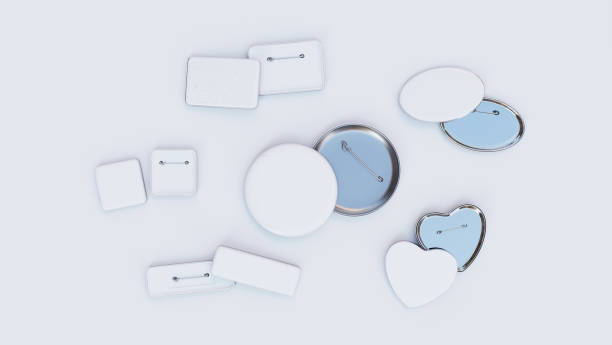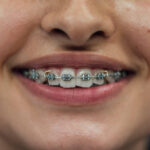Table of Contents
- A Brief History of Pins
- Why Your Business Needs Branded Pins
- Understanding the Different Pin Badge Types
- The Design Process: A Step-by-Step Guide
- Pin Badge Sizing and Colour
- Creating a Memorable Backing Card
- Choosing the Right Fastening
- The Production Process: From Order to Arrival
- Quality and Durability: Why it Matters
- The Best of British: Why Choose a UK Supplier
- The Future of Branded Pin Badges
A Brief History of Pins
Before we dive into the nitty-gritty of creating your own pin badges, let’s take a moment to appreciate the humble pin. For centuries, these small metal adornments have served as powerful symbols of status, allegiance, and personal expression. From ancient Egyptian dress pins to the military badges of Rome, they have long been a way for people to show who they are and what they stand for.
The modern pin badge as we know it today truly came into its own during the 19th and 20th centuries. It was the Victorian era that saw the rise of the commemorative pin, with people collecting souvenirs from world fairs and significant events. The First World War popularised the use of pins for honour and recognition, and by the mid-20th century, they were a cornerstone of political campaigns and pop culture. Today, the pin badge is more than just a piece of jewellery; it’s a canvas for creativity, a statement of identity, and an incredibly effective tool for branding.
Why Your Business Needs Branded Pins
You might be wondering why a small, metal badge is so important in a world of digital marketing and social media. The answer lies in its tangibility and lasting appeal. In a digital-first world, a physical object that people can hold, wear, and collect stands out. Branded pin badges aren’t just merchandise; they are miniature ambassadors for your brand.
They offer a unique way to build a community. Think about the cult-like following of brands that release limited-edition pins. They create a sense of belonging and exclusivity, transforming customers into dedicated fans. Pins are also perfect for engaging with your audience at events, trade shows, and pop-up shops. They’re an easy, low-cost giveaway that people will genuinely want to take and wear.
The beauty of a pin badge is its versatility. They are small, light, and easy to ship, making them an ideal product for online stores. They can be sold as stand-alone items, bundled with other products, or given as a free gift with a purchase. They can also be used as a token of appreciation for loyal customers or as a reward for employees. This multi-faceted approach to marketing makes them an invaluable asset for any business, regardless of size.
A well-designed pin badge is a piece of wearable art. It says something about your brand’s personality and values. It’s an investment in a physical product that will be seen again and again, generating countless impressions and conversations. Unlike a digital ad that disappears in seconds, a pin badge can last for years, becoming a part of a person’s everyday life.
Understanding the Different Pin Badge Types
Before you can design your pin, you need to understand the different types available. The choice you make will affect the final look, feel, and cost of your badge.
Enamel Pins
Hard Enamel Pins: These are the most durable and highest quality pins. The coloured enamel is filled to the same level as the metal ridges, creating a smooth, polished surface that feels premium to the touch. The process involves polishing the pin multiple times, giving it a high-end, jewellery-like finish. They are perfect for detailed designs and are an excellent choice if you’re looking for a lasting product.
Soft Enamel Pins: A more affordable option, soft enamel pins have a recessed texture. The enamel sits below the metal lines, creating a raised, tactile surface. This makes them great for designs that feature bold lines and distinct colours. While they may not have the same smooth finish as hard enamel, they are incredibly popular and offer a fantastic balance of quality and cost. They are often a go-to for merchandise and giveaways.
Die-Struck and Die-Cast Pins
Die-Struck Pins: These are perfect for a classic, sophisticated look. Made from solid metal, these pins feature no enamel or colour. Your design is etched directly into the metal, which can then be polished, sandblasted, or plated in different finishes like gold, silver, or bronze. The result is a clean, minimalist badge that exudes elegance and class.
Die-Cast Pins: If your design is particularly intricate or features a complex shape, die-cast pins are the answer. The die-casting process allows for more three-dimensional and cut-out shapes than other methods. This technique is ideal for custom shapes and complex designs where a traditional stamping process wouldn’t suffice.
Other Pin Badge Types
Offset Printed Pins: These pins are for designs that are rich in detail and feature gradients or photographs. The design is printed directly onto the metal and then covered with a clear epoxy dome. This protects the image and gives it a smooth, glossy finish. They are a versatile choice for capturing detailed art or complex branding.
Button Badges: While technically not a metal pin in the same sense as the others, button badges are a classic and budget-friendly option. They feature a printed design encased in a clear plastic shell, with a simple pin back. They are quick to produce and perfect for large-scale events, campaigns, and mass giveaways.
The Design Process: A Step-by-Step Guide
The key to a successful pin badge is a great design. This is your chance to distil your brand’s essence into a small, powerful visual.
Step 1: Conceptualisation and Simplification
Start with your core concept. What is the message or image you want to convey? Pin badges are small, so simplicity is key. A good rule of thumb is to avoid intricate details that may get lost in the final product. Bold lines, clear shapes, and a limited colour palette work best. Think about how your design will look at a smaller scale. If it’s a logo, consider a simplified version that is instantly recognisable.
Step 2: Choosing Your Colours
When it comes to colour, less is often more. The number of colours you use will directly affect the cost of your enamel pin. Stick to your brand’s core colours for consistency. Remember that each colour will be a distinct area of enamel, separated by a raised metal line. Think of it like a miniature paint-by-numbers.
Step 3: Preparing Your Files
Your supplier will require a high-resolution file, usually a vector-based format like AI, EPS, or SVG. This ensures the design can be scaled without losing quality. If you don’t have a vector file, a high-resolution PNG or JPG might work, but it’s always best to check with your supplier first.
Pin Badge Sizing and Colour
The size of your pin badge is critical. Too small, and your design might be hard to see; too large, and it could be cumbersome to wear. The most common sizes for pins are between 25mm and 40mm, but this will depend on your design. If you’re creating a simple logo, a smaller pin might be all you need. For a more complex or artistic design, a larger size will allow the details to stand out.
Pin badge colours are determined using the Pantone Matching System (PMS). This system provides a universal language for colour, ensuring that the colours you choose in your design software are the exact same colours used in the production process. When you submit your design, you’ll need to specify the Pantone colours for each part of your pin. A reliable supplier will guide you through this process, ensuring your brand colours are perfectly matched. A good copywriter should also be able to communicate the importance of this process to customers.
Creating a Memorable Backing Card
The backing card is often an afterthought, but it plays a crucial role in the overall presentation of your pin. It’s the first thing people see when they receive your product, and it can elevate the entire unboxing experience.
The backing card is a prime piece of real estate for your brand. Use it to display your logo, website, and social media handles. You can also use it to tell a story about the pin itself – what does it represent? Why was it created? This adds a layer of meaning that can turn a simple purchase into a memorable experience. You could use a simple, elegant design, or something more creative that complements the pin’s aesthetic. The options are endless, but always keep your brand’s identity at the forefront.
Choosing the Right Fastening
The way a pin badge is attached is an important factor in its functionality and security. There are a few different options, each with its own pros and cons.
- Butterfly Clutch: This is the most common and affordable option. It features a small, spring-loaded clasp that slides over the pin post to hold it in place.
- Rubber Clutch: A modern alternative to the butterfly clutch, the rubber clutch is more comfortable and less likely to fall off. It provides a secure grip and is a favourite for many pin collectors.
- Locking Pin Back: For a truly secure fastening, a locking pin back is the best choice. This screw-on mechanism ensures your pin won’t budge, making it perfect for items that will be worn on jackets, bags, or other items that see a lot of wear and tear.
- Magnet Backing: An excellent option for delicate clothing, a magnetic backing uses two powerful magnets to hold the pin in place without leaving a hole.
The Production Process: From Order to Arrival
Once your design is ready, the production process begins. A reputable manufacturer will walk you through the following stages:
- Quotation and Order Confirmation: You’ll receive a detailed quote based on your design, pin type, and quantity. Once confirmed, you’ll place your order.
- Artwork Approval: The manufacturer will create a digital proof of your pin badge and backing card for you to approve. This is your chance to make any final adjustments.
- Mould Creation: A steel mould is created based on your approved artwork. This mould is the key to creating a perfect, consistent pin badge.
- Stamping or Die-Casting: Your pins are then stamped or die-cast from a sheet of metal.
- Plating and Polishing: The metal pins are plated with your chosen finish (e.g., gold, silver, or black nickel). They are then polished to a high shine.
- Enamel Filling: For enamel pins, the colours are carefully filled into the recessed areas.
- Final Checks and Packaging: Each pin is individually inspected for quality, and then packaged with the chosen fastening and backing card.
- Shipping: Your pins are shipped to you, ready to be distributed.
Quality and Durability: Why it Matters
When it comes to branded merchandise, quality is paramount. A cheap, flimsy pin badge can do more harm than good, as it reflects poorly on your brand. A high-quality pin, on the other hand, shows that you care about your product and your customers. A well-made pin badge will stand the test of time, resisting scratches, fading, and chipping.
The longevity of a pin badge means it will continue to promote your brand for years to come. It’s a physical representation of your brand’s commitment to excellence. This is why it’s so important to choose a supplier that uses premium materials and has a strict quality control process. You want your pin to be a conversation starter, not a disappointment. When you work with a supplier that stands by their product, you can rest assured that your pins will make a lasting positive impression.
The Best of British: Why Choose a UK Supplier
For businesses in the UK, choosing a local supplier offers several key advantages. The most significant is the ability to communicate directly and easily. You’re in the same time zone, which makes discussions about your design and production timeline seamless. You also have the peace of mind of knowing that your pins are subject to stringent British labour and ethical standards.
A British supplier also offers faster shipping and lower costs for UK-based clients, as there are no international customs fees or delays. This is particularly beneficial for small businesses that don’t have the resources to manage complex international logistics. When you’re looking for a partner for your pin badge needs, consider a company that understands the British market and can provide personalised service. It’s an investment that can save you time and money in the long run while supporting the local economy. And when it comes to the best of British, the team at Totally Branded are the experts in their field, providing an unparalleled service. For years, they’ve been at the forefront of the industry, delivering high-quality, custom-made products that perfectly capture a brand’s vision.
The Future of Branded Pin Badges
The pin badge industry is not standing still. With new technologies and design trends emerging, the possibilities for custom pins are endless. We’re seeing more sustainable materials being used, such as recycled metals and eco-friendly enamel alternatives. There’s also a growing trend toward interactive pins with QR codes or augmented reality features that link to digital content.
Branded pin badges will continue to be a powerful tool for building brand loyalty and community. The tactile nature of the product, combined with its lasting appeal, makes it an ideal way to connect with your audience on a personal level. As consumers become more conscious of sustainability and ethical production, choosing a supplier that meets these standards will become even more important. It’s a way to show that your brand is not just about a product; it’s about a purpose. The pins you create today could become treasured keepsakes tomorrow. When you choose a partner that values quality and craftsmanship, like Totally Branded, you’re not just ordering a product; you’re crafting a piece of your legacy. That’s what makes them such a great investment. From start to finish, the process is handled with care and attention to detail.
This is where the magic happens. The journey from a simple idea to a tangible piece of art is a rewarding one. It’s about more than just a pin; it’s about creating a connection, telling a story, and making a lasting mark on the world. You have an opportunity to create something truly special, something that people will proudly wear and share. So, what are you waiting for? Get ready to design your next masterpiece. Totally Branded will be there every step of the way to ensure your vision comes to life.



